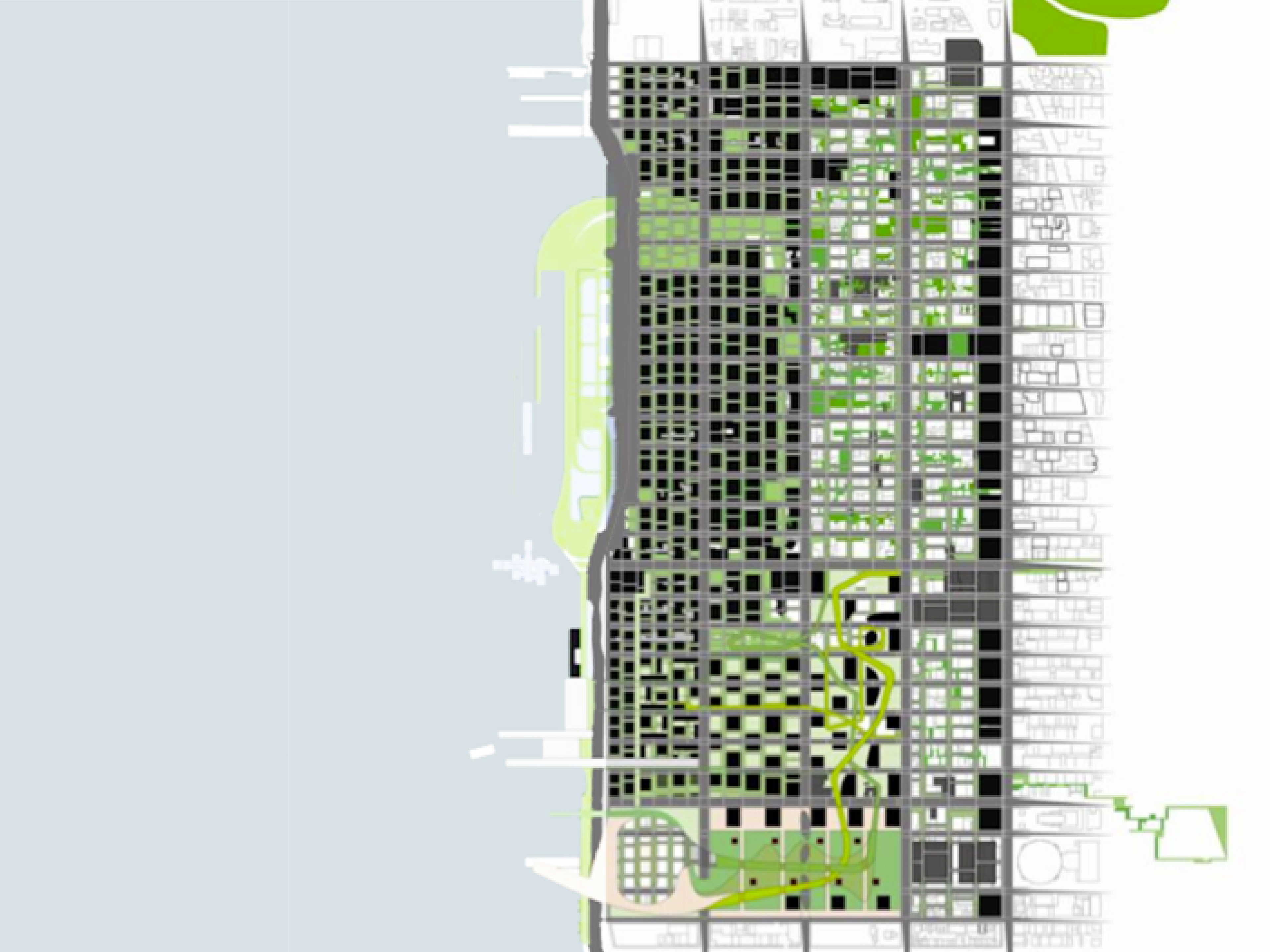Midtown Manhattan West—Fabric Transformations
New York, NY
2003







The project for Manhattan West was sponsored by the Newman Real Estate Program at Baruch College, CUNY, and was part of a conference and exhibition that included submissions by Harvard University; Cobb, Fried, Columbia University; James Polshek Architects and City College; and Davis Brody Architects.
The goal of our plan for Manhattan West was to define short and long term development strategies for the expansion of the Midtown Business District, the creation of a new waterfront and the planning of new residential districts. New York’s midtown, the most important business center in the world, can only expand towards the Hudson River in the area defined by 31st and 60th streets between 8th and 12th avenues, known as Manhattan West. This is an area of extremely low density with large unbuilt areas and a zoning that does not reflect the dynamics of the present urban condition.
Our plan deals with the enormous complexity of the area related to the multiplicity of existing infrastructures and neighborhoods. Manhattan West includes Penn Station and the LIRR Station, the 40th Street Bus Terminal, and three urban renewal zones: the 42nd Street corridor, the Clinton district, and Hell’s Kitchen. It is also the point of entry from New Jersey into Manhattan via the Lincoln Tunnel. The plan includes new important projects such as an Olympic Stadium and Olympic Village, the expansion of the existing Javits Convention Center and the redevelopment of the west side of Manhattan.
(read more)
The goal of our plan for Manhattan West was to define short and long term development strategies for the expansion of the Midtown Business District, the creation of a new waterfront and the planning of new residential districts. New York’s midtown, the most important business center in the world, can only expand towards the Hudson River in the area defined by 31st and 60th streets between 8th and 12th avenues, known as Manhattan West. This is an area of extremely low density with large unbuilt areas and a zoning that does not reflect the dynamics of the present urban condition.
Our plan deals with the enormous complexity of the area related to the multiplicity of existing infrastructures and neighborhoods. Manhattan West includes Penn Station and the LIRR Station, the 40th Street Bus Terminal, and three urban renewal zones: the 42nd Street corridor, the Clinton district, and Hell’s Kitchen. It is also the point of entry from New Jersey into Manhattan via the Lincoln Tunnel. The plan includes new important projects such as an Olympic Stadium and Olympic Village, the expansion of the existing Javits Convention Center and the redevelopment of the west side of Manhattan.